#strings magazine
Explore tagged Tumblr posts
Text










Cary Elwes + being cute and dorky and adorable
#cary elwes#lady jane#a castle for christmas#ghost light#robin hood men in tights#another country#haunting of cawdor#liar liar#no strings attached#wish you were dead#walk the talk#HE IS SO SO SO SO SO CUTE MY GOD#also everytime he reads a magazine IT HAS HIMSELF ON THE COVER ITS SO FUNNY#this has to be a running gag for 30 years now
337 notes
·
View notes
Text

#angus young#ac/dc#advertisement#1990s#classic rock#ernie ball#guitar strings#magazine ad#1996#hard rock
10 notes
·
View notes
Text
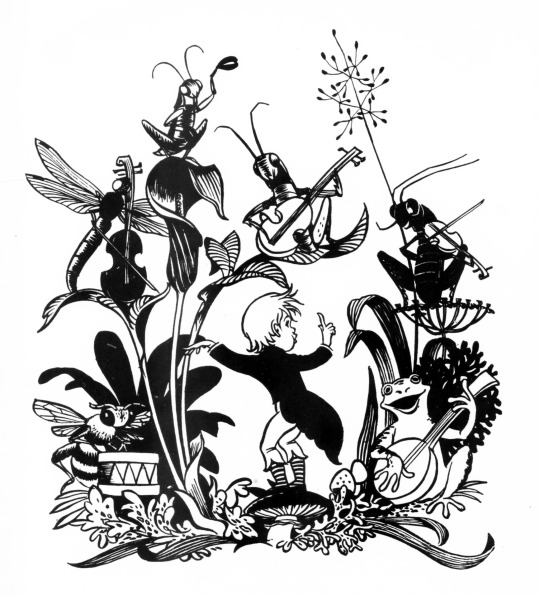
Sheilah Beckett (1913-2013), ''Jack and Jill'', Vol. 11, #11, Sept. 1949 Source
#Sheilah Beckett#american artists#jack and jill#jack and jill magazine#animals playing instruments#insects with string instruments#who manufactures tiny instruments?#that can't be a viable business
59 notes
·
View notes
Text

Guitarist Magazine | May 2023 | Dark Side of the Moon 50th Anniversary
~Palais des Sports de Paris, 1973. Photo by Marc Enguerand
#pink floyd#david gilmour#guitar god#strings master#50th anniversary#dark side of the moon#guitarist magazine#nick mason#rick wright#roger waters#progressive rock#experimental rock#pink floyd david gilmour
10 notes
·
View notes
Text

#Roku-Gen Shoujo#Six String Girl#Mimiko Mine#guitar#rockstar#magazine#magazine cover#oneshot#musician#my caps#roku cap#abishi wakatake
5 notes
·
View notes
Text
One Frame At A Time
An Article about LAIKA's upcoming film, Wildwood, from Empire Magazine. Transcript by Rampage for visibility.
"THIS MONTH I found myself in a staring contest with an owl. (Spoiler: I lost.) It's not every issue this happens, but then again, it's not every Issue you get to go to Portland, Oregon for a visit to the stop-motion magic factory that is Laika. Portland itself may have been a bit of a let-down, in that I didn't encounter a single Carrie Brownstein or Fred Armisen (if you haven't watched Portlandia, do so immediately), but there was nothing disappointing about the place behind Kubo and the Two Strings and the upcoming Wildwood, the movie that will feature said bird. It was a total treat to get a glimpse of their new animated epic coming together (though the box of tiny puppet eyeballs might haunt me for a while). Head to page 66 for our report.
Wildwood isn't out until 2025 (there's no rushing a puppet owl), but this issue also dives deep into more imminent excitement…"

"Laika isn't just a studio, it's a way of life. As the masters of stop-motion animation painstakingly put together their biggest project yet, we visit their Portland HQ to discover their slow-moving secrets."

"The Dogfight was going to look awesome. The boy was sure of it. Buzzing from the movies he had sat through, enthralled, on Saturday-morning TV or at cinema matinées in his farm town outside of Portland, Oregon- stop-motion classics such as Ray Harryhausen-enhanced The 7th Voyage of Sinbad and Rankin/Bass' Rudolph The Red-Nosed Reindeer- he had already attempted to inject life into Star Wars action figures. Now, it was time for something a little more spectacular. He marched to his X-Wing toy, like a titchy Wedge Antilles, grasped it in his eager hands and proceeded to film it, frame by frame, soaring through the sky, little explosions created using balls of cotton. His mind boggled at how incredible it was going to look when he unveiled his final cut. "Well, it looked like garbage." laughs Travis Knight now. "I was like, 'I'm going to have this amazing aerial battle here!' It was so fun to imagine what it could be. And then you see the end result, and it wasn't what you imagined. So that was heartbreaking."

Flash-forward some 40-odd years, and Knight is still tinkering with his toys. He's still just outside Portland, Oregon except now those toys are no longer purchased from the nearest Walmart. And, rather than his parent's basement, all alone, he's in a giant warehouse complex, assisted by roughly 400 ridiculously talented people. This is Laika, the studio behind the likes of Coraline, ParaNorman, and Kubo and the Two Strings; 964 miles up the coast from Hollywood but light years away in terms of how things are done. No sequels, no chatter about "IP". Productions that are not rushed through the system like fast food, but baked like gourmet dishes in a clay oven. Their new stop-motion epic, Wildwood, has been in development for 12 years; it's finally due out in 2025.
It's not always been smooth sailing here, but this is still a place where dreams come true.
Very, very slowly.
"I have a big aerial scene in this movie, with a giant bird," smiles Knight. "So, you know, good things come to pass.""

"There's a go-kart track around the corner from Laika, called K1 Speed. Every now and again, somebody from the studio will head there, clamber inside a buggy and hit the throttle, hard. Whizzing around a circuit at high velocity is a form of recalibration. Because at Laika, despite the presence of an in-studio coffee shop called Dripster's (named after a location in Wildwood). things move at, well, puppet pace.
When Empire visits the studio in early April, it proves to be the quietest set visit, by far, that we've ever experienced. The usual sounds of a busy shoot- walkie-talkies, clapperboards, Michael Bay yelling at a grip - are absent. In fact, it's hard to detect any activity at all. But as we stroll around the hushed, 400,000 square-foot warehouse complex, we find incredible things happening behind curtains. A massive eagle, wings outspread. A study, complete with marble fireplace and grand piano, the dwelling of an oversized owl. Forest tableaux with tangled trees and creeping ivy. All in miniature, and precisely put together by hand or using nifty tech: even the tiny leaves for the foliage have been laser-cut. And rather than a bustling crew gathered around the camera at each micro-set, there's just a single, hyperfocused person. "Until we shout action, you'll have set dressers, cameramen, motion control, lighting, gaffer, and somebody from puppets doing final checks," says Laika's Dan Pascall. "But as soon as we get launched, everyone's out and then the animator's in there. I mean, for a 20- or 30-second shot they can be in here for months on their own. It's a pretty solitary thing."
Wildwood is a fantasy epic directed by Knight, based on a book by Colin Meloy, frontman of the band The Decemberists, it's a sprawling tale that's actually set in and around Portland, in which a young woman, Prue McKeel, finds herself in an enchanted forest world. On the day of Empire's visit, there are 25 animators working on the project. But those animators are hidden away and silent, like monks in prayer, rapt in focus over the tiniest of details. When we encounter Jason Stalman, who's worked on Laika productions since 2012's ParaNorman, he's attending a throne room the size of Prince George, concentrating on the puppet of a female character who is reacting to something in the scene.
"She's doing very little, but you have to keep the character alive" he explains. "She's trying to be alluring, so she's doing all these little movements and body adjustments, which is really hard to do." Another challenge is her dress, which has to move independently too. The solution: tiny foam pads beneath the dress, to which the fabric can be pinned to, creating- eventually- the illusion of a swishing, real-looking costume.
Creating a performance frame by frame requires an enormous amount of mental energy.
"It's Strange; it takes you a minute to come back to the normal world after you've done a day of this," admits Stalman. "People could think, 'how the hell do you do it? it's so boring.' But I like it, because the world is so crazy and fast. This feels nice, to do this little, delicate thing."
One animator at Laika is likely to, in a week, create three-and-a-half [3 ½] seconds of screentime. That's the kind of stat that might prompt some studio executives to kick over a watercooler in frustration. But Knight knows from experience that you can't rush these things.
Puppets move at their own tempo. "You could take shortcuts," he says. "But to me, the film requires whatever it requires. I do think making a movie like this is stupid. It's the stupidest way to make a movie. It's harder, there's more pain. But I also think there's more joy as well. I'm aware of the ticking of the clock and the mortal coil and everything else. I do want to tell as many stories as I can before my time is done. But when this group of people come together to create something, it's the most satisfying thing I've ever been a part of.""

"Back in 2009, stop-motion was on life-support (quite possibly hooked up to a tiny, hand-crafted IV). Tim Burton's Corpse Bride had barely made its money back a few years earlier, but nobody in Hollywood was baying for more. And advances in CG animation had led to studios looking for the next Shrek, not the next Nightmare Before Christmas. "Stop-motion has always been the red-headed stepchild of animation" says Knight. "And CG could effectively do everything we do in stop-motion, but better. There was certainly a moment where I think any of us who were practitioners of the craft were asking ourselves, 'Is there a future here?'"
But he, and others were deeply in love with both the process and the vibe of stop-motion. Knight, whose father is Nike magnate Phil Knight (as played recently in Air by Ben Affleck), had abandoned plans for a career in finance, deciding to follow that passion, wherever it might lead him. And it led him (after a brief stint as rapper ‘Chilly Tee’) to Laika- formerly Will Vinton studios which Phil Knight acquired in 2002, Travis becoming CEO. Laika is the name of a dog sent into space by the soviet union in the 1950's; Knight's career choice seemed as daunting an odyssey as that of the cosmic pooch. Especially when the studio embarked on its first feature film, Coraline, directed by The Nightmare Before Christmas' Henry Selick and on which Knight worked as lead animator. Not only were financers reluctant to back a stop-motion animation, but they proved unenthusiastic about the lead character being female- and not a Disney princess, but a regular teenage girl. Despite it being based on a book by Neil Gaiman, despite Selick's pedigree, despite the stunning visuals that Laika was orchestrating, the mood was grim. "There was a lot of anxiety," remembers Knight. "When we were trying to find partners who understood what we were trying to do, we were getting nothing but rejection. It was like high school all over again."
Then, at the premiere the weekend before it came out, a studio executive approached him. "According to the data it was going to bomb tremendously. And I remember an exec put his hand on my shoulder and said, 'I'm sorry. You gave it your best shot.' In this moment where we're trying to have this big celebration of what the crew had created, it was just tainted by this fact that it didn't work, and we were going to fail."
But it did work: after a surprisingly strong opening weekend, Coraline found legs, going to make $125 million. "Fast-forward a couple of months from the premiere, and that same executive team was asking me to make 'Coraline 2'," Knight recalls, "I was like, 'No, we're not gonna make Coraline 2. We're gonna tell a different story.'" Laika were off and running. Their follow-up, 2012's ParaNorman, was a zesty zombie comedy. 2014's The Boxtrolls was a raucous romp featuring mischievous creatures and industrious quantities of cheese. 2016's Kubo and the Two Strings, Knight's directorial debut, was an elegiac stop motion samurai epic. And 2019's Missing Link was a massively fun riff on Around The World In 80 Days, with a male Sasquatch named Susan. The studio's fare has remained artisanal, original and eccentric. And while the box-office figures have not been astronomical, those who do see their films tend to treasure them. In fact, some viewers became so inspired that they've ended up as employees at Laika themselves. "There are people who saw ParaNorman who work here now." Says the studio's head of production, Arianne Sutner, "Same thing with Coraline. You know, we don't make tons and tons of stuff, but what we have has a special impact. People love it for all its unusualness.""

"In Laika's 'Story room', where Empire meets Knight, bookshelves teem with thick volumes: subjects include P.T. Barnum, Art Deco, Cape Cod houses and fashions of the Victorian age. In a cabinet, meanwhile, are DVDs, many of which seem like unusual references for an animated adventure: the documentary Fires of Kuwait, The Lord of The Rings, The Birds, Micheal Clayton, Wong Kar-wai's The Grandmaster. "The Grandmaster is a beautiful film." Knight enthuses. "That was a huge inspiration when I was working on Kubo, because of how gorgeously it was shot. Micheal Clayton is more to do with lighting and composition, that sort of thing. But yeah, we pluck inspiration from a variety of sources." The stop-motion process is intrinsically difficult and time-consuming: boxes of replacement faces (each bearing a unique code) are trolleyed to set to create every smile, smirk and splutter. Nine 3D printers work overtime to make moulds of characters, which are then dressed with bespoke costumes, fitted with wigs and prepared for their moment in the spotlight. The quantities required are mind-boggling: Missing Link called for 106,000 unique faces; Wildwood will have far more, while also boasting 120 sets, double the number built for Kubo. But Laika is determined to keep crashing through the technical obstacles encountered, in a quest to become ever more cinematic. For Kubo, the studio tackled water, a giant skeleton and origami animation. For Wildwood, Knight is thinking bigger. He has the benefit of being fresh off his first live-action venture as director, 2018's Bumblebee, the best film in the Transformers franchise to date. And he's brought on cinematographer Caleb Deschanel, veteran of such non-puppetry epics such as The Right Stuff and The Patriot. With the rest of the team, they're making innovations both large and small. They've cracked a way to put muscles into puppets' arms ("We've never done that before," says Knight, "it looks amazing when I see it on-screen") and to create a fully articulated rat puppet so miniscule that it can rest on your pinkie ("The joints are so small - if you drop it, it looks like a human hair"). Most dauntingly, they are orchestrating a vast battle sequence, which would make Jason and the Argonauts' skeleton brawl look like a pub barney. "It's the single most difficult thing we're tackling on this movie." Says Knight. "We're starting to chip away and tentatively stepping into, like, 'Oh God, oh God, oh God, how are we gonna do this?' But I think it's going to work. And you'll tell me when the film's done if it did. Stop-motion films tend to look like they're shot on a table-top, because they are. Moving a physical object one frame at a time and trying to give it life, that's its own challenge. And then you bring all the kineticism you would have in a live action movie... it's so hard."
Spectacle is one thing, but Laika's filmmakers are equally focused on their characters. Hailed for their progressiveness and inclusivity, they have brought the world Coraline Jones, a female animated hero like no other. ParaNorman's Mitch (voiced by Casey Affleck) was mainstream cinema's first openly gay character, leading to Laika being nominated for a GLAAD award. And they're determined for Wildwood's characters, including Prue, another young female hero, to connect powerfully with viewers.
To create nuanced puppet performances, Laika animators study live-action ones. "There's a moment in Dangerous Liaisons with Glenn Close on a sofa, and John Malkovich is asking her, 'What's your story?'" says Jason Stalman of a touchstone for the scene he's animating today. "The way she delivers her lines- I'm getting the shivers - I'm reacting so much to that that I thought if I could get even one tiny piece of stardust from that and put it into this, I'm going to try. It's nice to show a thought process happening in a two-inch piece of plastic head."
The animators also study themselves. Study their colleagues. And even their own families. "The design of the little baby in Wildwood is actually based on my nine-year-old son. That's how long we've been developing this damn thing," reveals Knight. "But he's voiced by my two-year-old son. It's a really strange thing to hear that little guy's voice come out of my older guy's puppet body. There's a scene in the film that's incredibly intense and the baby's screaming and crying and people go, 'Oh my God, how did you get that baby to do that?' I'm like, 'Well, I changed his diaper.'""

"2023 marks the 125th anniversary of the very first stop-motion film ever created: 1898's The Humpty Dumpty Circus, in which dolls of circus acrobats, elephants and donkeys came to life. That historical artifact has been lost forever, but the artform itself has refused to follow suit. Last year saw Guillermo Del Toro venture into Stop-motion with Pinocchio and Henry Selick return with Wendell & Wild. Aardman recently teamed up with Lucasfilm for a stop-motion Star Wars: Visions short (like Travis Knight's childhood film, it features an X-wing, plus actual Wedge Antilles), while a Chicken Run sequel is clucking its way to Netflix. Much of the credit for the reanimation of stop-motion must go to Laika. They've kept on ploughing forward, dedicated to the medium. The studio is expanding and transforming, with Laika set to move into the live-action realm. The first of those projects will be Seventeen, based on a John Brownlow book about the world's most lethal hitman. "It's a thriller with soul," says Knight. "Whatever we're developing, be it animation or live-action, it's going to be something that's emotionally resonant, that blends darkness and light and humor and heart."
But at the core of the studio, despite the fact they've incorporated elements of CG into their films since the start, will remain those patient-testing puppets.
While Wildwood is their biggest, most ambitious project yet, they're rolling other dice even before that's out. Including The Night Gardener, a stop-motion movie based on a script by Bill Dubuque, creator of Ozark, and described as "A neo-noir folk tale.", which is Laika's first that's not for kids. "This film is not a family film, at all," Knight says. "There's never been a film made like this in our medium. And that really excites me. It's a beautiful story, it scares me, And it's going to be an extraordinary piece of cinema, I think. Or at least has the potential to be."
The Laika philosophy is an admirable one: keep pushing in new directions, never repeat yourself. But one thing remains consistent for these pioneers in the drizzly Pacific Northwest. The pain of making one of these damn films, and the pleasure of -finally- watching the results.
"You know, these things are like little vampires," Knight reflects of the puppets that fill his warehouse. "They suck the life out of the people that touch them. At times it's really frustrating - they won't do what you want them to do. But when I see a puppet that's been imbued with life, because an animator on stage has had an emotional connection with an intimate thing, an assemblage of silicon and steel... Well, it's the closest thing to magic I've ever witnessed.""
#laika studios#behind the scenes#empire magazine#wildwood#stop motion#upcoming films#seventeen#the night gardener#film bts#coraline#paranorman#the boxtrolls#kubo and the two strings#missing link#mod rampage#chilly tee
10 notes
·
View notes
Text

8 notes
·
View notes
Text
Christian Carey’s Questions for 2025

The Hard Quartet
How long are the current upticks in CD and LP sales likely to last?
When things finally go all digital, can we find better gatekeepers than Spotify and their ilk?
When will the AI bubble burst?
Will periodically untethering from devices become the new Hygge? One hopes so.
2024 was a difficult year in most ways, a happy exception being the bounty of excellent music released to the world. I found it impossible to make a comprehensive list. The one below is simply today’s reflection on the recordings that I kept coming back to in 2024, and likely will in 2025 and beyond.
Adeline Hotel — Whodunnit
Laurie Anderson — Amelia (Nonesuch)
Felicia Atkinson — Space as an Instrument (Shelter Press)
The Black Keys — Ohio Players (Nonesuch)
Donald Berman — Ives Piano Sonatas (Avie)
Leo Chadburn — Primordial Pieces (self—released)
Alessandro Cortini — Nata Infiniti (Mute)
Cloud Cult — Alchemy Creek (Earthology)
Alice Coltrane — The Carnegie Hall Concert — Live (Verve)
The Cure — Songs of a Lost World (Polydor)
Danish String Quartet — Keel Road (ECM)
Taylor Deupree — Sti.ll (Greyfade)
Efterklang — Things We Have in Common (City Slang)
Nomi Epstein — Shades (Another Timbre)
Jake Xerxes Fussell — When I’m Called (Fat Possum)
Godspeed You! Black Emperor (Constellation) — No Title as of 13 February, 2025 28,340 Dead
The Hard Quartet — S/T (Merge)
Loma — How Will I Live Without a Body? (Sub Pop)
Phosphorescent — Revelator (Verve)
Oneida — Expensive Air (Joyful Noise)
Rosali — Bite Down (Merge)
Ches Smith — Merge Ash (Pyroclastic)
Alan Sparhawk — White Roses, My God (Sub Pop)
Waxahatchee — Tigers Blood (Anti)
#yearend 2024#dusted magazine#christian carey#the hard quartet#adeline hotel#laurie anderson#felicia atkinson#the black keys#donald berman#leo chadburn#alice coltrane#alessandro cortini#cloud cult#the cure#danish string quartet#Taylor Deupree#efterklang#nomi epstein#jake xerxes fussell#Godspeed You! Black Emperor#loma#oneida#rosali#ches smith#alan sparhawk#waxahatchee
2 notes
·
View notes
Text

scrolling on twitter and my brain immediately honing in on the words "same coin" cos of course it would
#but also this is from that reddit ama in 2013 lmao#kinda funny that a writer from a kids magazine was on reddit and went sWEET FREE PAGE#but also saw a post theorising that the trick is basically the 'pull a coin with a string outta a vending machine' thing#which would be fun considering the year and how the j3 portal test drawing basically looks like that#where its pulling the test dummy outta the portal#i personally just assumed it was a magic trick cos being a magician ended up being part of stan's mr mystery act
4 notes
·
View notes
Text


Lingerie By Decade — 1960s
#lingerie#high fashion#90s model#80s vintage#that 70s show#60s fashion#retro#modern fashion#80s aesthetic#60s vintage#60s style#60s 70s 80s 90s#vintage fashion#vintage#archive fashion#fashion archive#vintage magazine#skims#world on a string
10 notes
·
View notes
Text

Update! Crimas doggo has gotten his own little shelf/pedastal so his lil leggies may be seen. It hangs a bit over the window ledge so it needs trimming, but will do as-is for the year 8U Previously his height was boosted with but an egg carton, thumbtacks, and a dream lol
#Just thought friendos would like to see lololol#So happy for my silly little guy every year lolololol#Like looks very seriously at my parents. it is time. time for dog 8U#Gave him his own little light string even though it is fraught with more suction cup shenanigans. all for my son 8U#Putting up the last chrysler touches and then I must focus wholly on room cleaning…. the under bed food network magazine stash…..
2 notes
·
View notes
Video
1957 illustration by Tom Hill by totallymystified Via Flickr: For the story Three Men On A String by Sally Hurst. From Woman's Own magazine.
#Tom Hill#river#boat#fishing net#punt#Three Men On A String#Sally Hurst#story#fiction#Woman's Own#artist#illustrator#illustration#author#writer#retro#vintage#nostalgia#1950s#fifties#magazine#flickr
2 notes
·
View notes
Photo

MAD Super Special #29, Winter 1979
Artists: Jack Davis, Paul Coker Jr, George Woodbridge, Bob Clarke
64 notes
·
View notes
Text
Hey,
Sleep Token fans (of which I am included)!
Let's look at something interesting today! No new pictures, but we'll probably get those tomorrow and Saturday!
No, no, let's look at something really, really interesting that I'm sure we can allllll relate to!
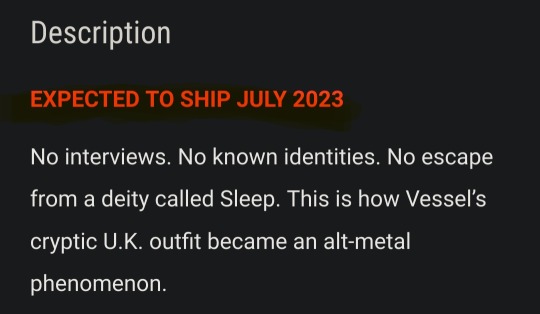
I am sure we all saw this and still all see it.
Now, we have five (5) days left in July! Five! This hasn't changed, nor have I received an email about any updates on this! But what I have received is a lot of, really, nothing from them!
Now!

AHEM.
Now, I know what you're thinking. Well, isn't Trustpilot open to all? There's no moderation, so maybe, oh, not trustworthy (there's a pun there, but I'm too sleepy) or something. But, with consistent reviews, like these...(and many more in the link above to look through on your own)
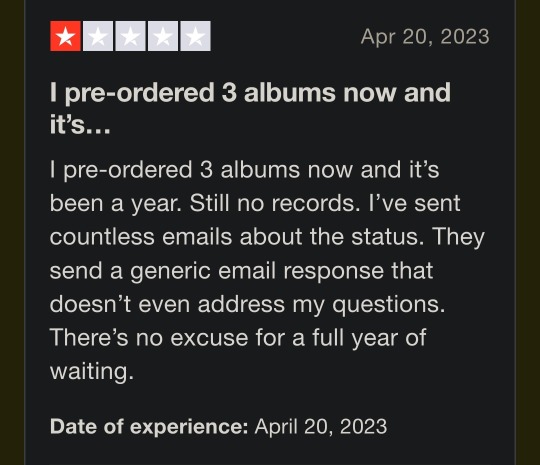



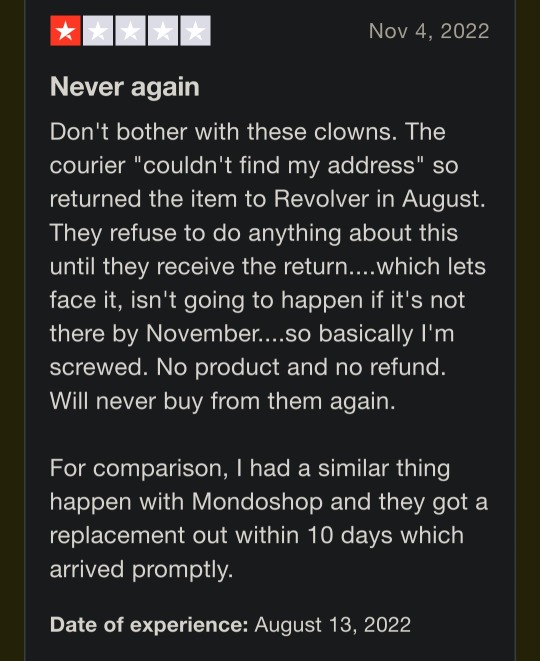
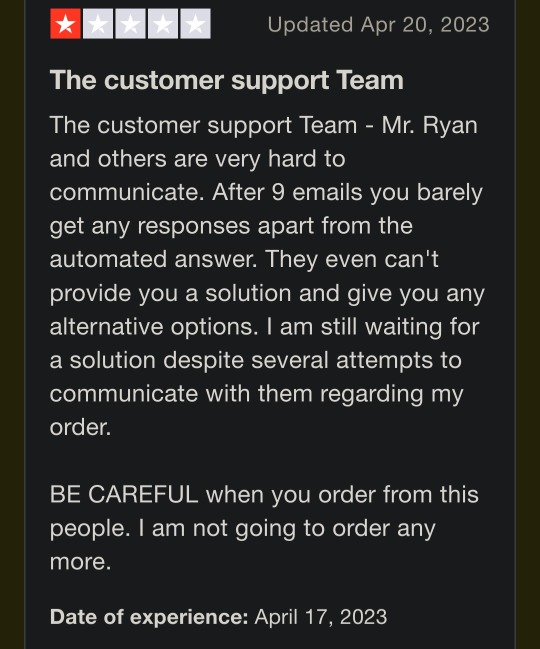


You can't help but wonder!
So, yeah, maybe a shit company for consumers. Especially with policies like this: "We hold NO RESPONSIBILITY for MAGAZINES that may be damaged, confiscated, or not delivered. All sales are final, if shipped."
Because isn't THAT fun. But the keywords there are "IF shipped".
Oh, and Terms of Service, silly me, why didn't I just read the "We are not responsible if information made available on this site is not accurate, complete or current. The material on this site is provided for general information only and should not be relied upon or used as the sole basis for making decisions without consulting primary, more accurate, more complete or more timely sources of information. Any reliance on the material on this site is at your own risk. [...] We reserve the right to modify the contents of this site at any time, but we have no obligation to update any information on our site."
You know, gosh, I should have expected that! Why not just lie then and say "Coming Soon" like new movies on DVDs! At least then I'd have lower expectations than I have now, which are, in fact, at the bottom of the ocean!
"We do not guarantee, represent or warrant that your use of our service will be uninterrupted, timely, secure or error-free."
I mean, wow, no shit, I would have never guessed!
So, anyway, do I have a solution? Nope, I'm still at the level of creative violence that we all know and love! Their customer service is known to be shit, but below, I've listed it along with their Twitter and Instagram.
Revolver Shop Customer Service
Revolver Magazine Twitter
https://twitter.com/Revolvermag?s=20
Revolver Magazine Instagram
https://www.instagram.com/revolvermag/
Overall, shitty company! I hope this isn't just a scam or the wait is over a year. I hope we get our magazine and the other variant or whatever you purchased without it being of terrible quality or actually torn up in transit within the next month or at least recieve some form of update, especially if you or a loved one spent money on those bundles, you may be entitled to a little bit of anger!
But, anyway, I'm angry, it's 7 in the morning, and my crow brain kind of just, ya know, realized it's almost the end of July.
Fuck Revolver Magazine.
#sleep token#revolver magazine#like sleep token babygirls did you check the reputation of this site#if any of the links are wonky pls let me know im on mobile#if any of you say oh this is normal i am stringing you up like a lightbulb using a candy necklace i swear#july edition should mean idk JULY edition not JULY OF NEXT YEAR ya know#anyway im going to gut the ceo with a spoon make em swallow his eyeballs and smother him with a towel soaked with his own blood#how is everyone else doing? hope you're well have lots of warm things or cold things or whatever temperatures you enjoy#i bought an ice cream maker bc im allergic to milk and all other options have coconut another allergy! what did you do today or yesterday?#my crow brain and me are out! peace!
10 notes
·
View notes
Text
I am very pro the "just stick a bunch of crap to your walls" method of interior decorating
#im redoing my room a little#got some folding bins to put my shoes in have some more string lights coming#but I've had the same collection of photographs and magazine cuttings for the past like 6 years#and wherever i live they always go onto my walls and then get taken down and stored#cause i havent had the necessary permanence for anything large or framed or whatever so#its just like... photos of my cat and greeting cards with art on them and various odds and ends#but theyve been the same#ive been looking at the same vintage postcard of notre dame since before i moved to europe
14 notes
·
View notes
Photo

New Yorker March 6th 1989 by John O'Brien
#art#1980s#80's#magazine covers#the new yorker#stringed instrument#orchestra#stringed instruments#musicians#concert
8 notes
·
View notes
